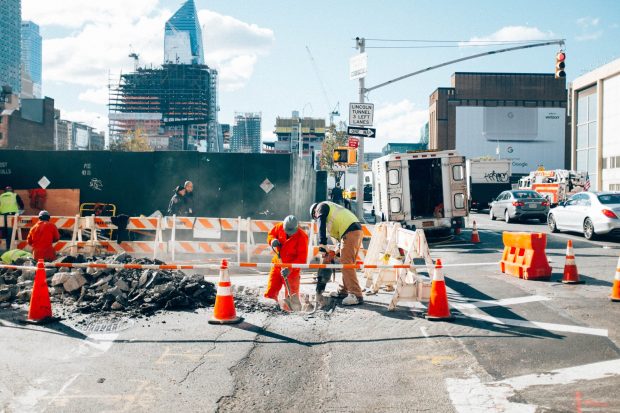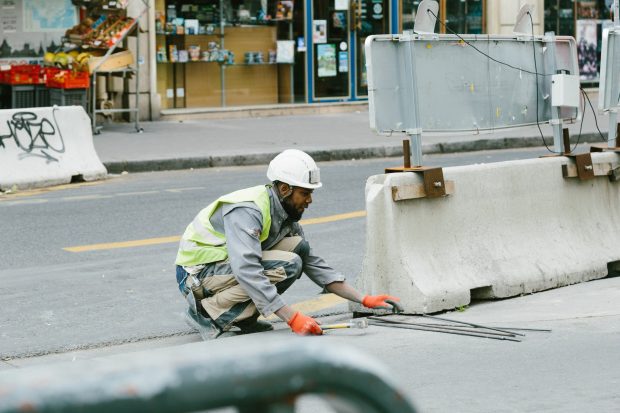It is well known that work zones play an important role in maintaining and upgrading our country’s roadways. Unfortunately, daily changes in traffic, lack of flaggers, and other construction activities on the roads can easily lead to serious crashes, severe injuries, and fatalities, all of which can cause excessive delays in any constrained driving environment.
The truth is work zones impact everyone. Not only do they pose a threat to workers, but they are also a serious safety hazard for all other drivers and passengers on the road. That’s why it is important that everyone does their part in practicing and improving work zone safety the best way they can.
In this post, we outline four ways front-line supervisors should try out to mitigate safety hazards and protect both workers and other passengers from fatal injuries in work zones.

Create an internal traffic control plan
Creating an internal traffic control plan is one of the most effective ways to improve work zone safety. It will help coordinate the flow of construction equipment and vehicles by allowing passengers to move safely around a work zone area, and workers to continue doing their jobs without being struck by construction equipment and other vehicles.
Remember to mark the entire work zone using temporary pavement markers to serve as guides for pedestrians, workers, and vehicles. Also, when creating your traffic control plan, make sure you avoid blind spots to prevent potential incidents. If there is any construction being done in late afternoons ensure that all vehicles have proper lighting, such as a 21 inch light bar, to serve as a warning signal and increase visibility while on the road and in work zones.
Wear proper clothing and equipment
Another work zone safety practice that can help reduce the likelihood of crashes, injuries, and fatalities is scrutinizing clothing and equipment. It is crucial that all workers, including those on foot and those operating construction vehicles, wear high-visibility safety apparel. Supervisors should inspect workers every day to ensure the protective clothing has not lost its retro-reflective properties and that the color has not faded.
Besides proper clothing, workers should also wear safety gear such as steel-toed boots, hard hats, safety goggles, and earplugs. When it comes to equipment, every work zone needs to have appropriate temporary traffic control devices such as signage, warning devices, and concrete barriers at all times.
Ensure proper work zone layout
Ensuring proper work zone layout is also a very important practice front-line supervisors should implement. In fact, every roadway work zone needs to be set up in accordance with the current edition of the Manual on Uniform Traffic Control Devices (MUTCD), which is the national standard for designing and setting up work zones safely to prevent accidents and crashes of any kind.
Additionally, it is also imperative that supervisors document the work zone layout at the beginning of every project. Even after the start of the project, they should evaluate the effectiveness of all traffic control devices they set up each day. They can do this by walking or driving around the job site to check for any skid marks, damaged barricades, or anything else they might have missed. For any changes they make, supervisors must inform their workers.
Prioritize work zone safety training
Despite taking all safety precautions for setting up a hazard-free work zone, it is paramount that all workers are knowledgeable of all the risks related to roadway construction and are properly trained to mitigate those risks. Unfortunately, in many cases, fatal injuries and crashes happen because workers make mistakes which are often a result of improper training.
So, it is one of the main responsibilities of supervisors to prioritize work zone safety training to reduce the likelihood of serious injuries and incidents.
Also, for optimal safety of both your workers and passenger vehicles, discuss and report safety hazards and close calls related to that day’s work.
Final thoughts
Work zones are dangerous areas and can impact everyone involved, including workers, drivers, and other vehicles. That’s why it is everyone’s responsibility to do everything they can to practice safety in such areas and mitigate the risks of crashes, injuries, and fatalities. To learn how you can do this, refer to our post and read how to improve safety in work zones.




